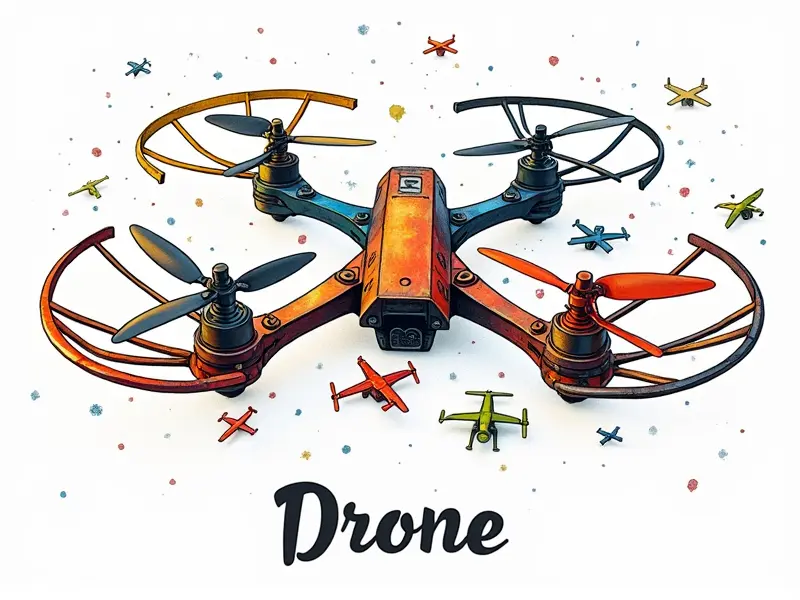How to fix drone camera?

Troubleshoot Common Drone Camera Problems
Drone cameras can be a source of frustration when they start malfunctioning. Whether you're dealing with poor image quality, connectivity issues, or other common problems, there are several steps you can take to troubleshoot and fix them.
- Check for firmware updates: Ensure your drone's camera is running the latest firmware version to avoid outdated software causing glitches.
- Inspect hardware connections: Verify that all cables are securely connected, especially if you're experiencing connectivity issues or poor video quality.
Clean and Maintain Your Drone Camera
Maintaining your drone camera is crucial for optimal performance. Regular cleaning can prevent dust and debris from affecting image clarity and overall functionality.
- Use compressed air: Gently blow out any dust or dirt that may have accumulated on the lens, sensor, or other components.
- Clean lenses with a microfiber cloth: Wipe down your drone's camera lens to remove smudges and fingerprints without scratching it.
Adjust Settings to Improve Drone Camera Quality
Your drone camera comes equipped with various settings that can significantly impact the quality of your footage. Experimenting with these settings can help you achieve better results.
- Change ISO: Adjust the ISO setting based on lighting conditions; lower it for bright scenes and raise it for darker environments.
- Adjust shutter speed: Faster shutter speeds are ideal for capturing fast-moving objects, while slower speeds can create motion blur effects.
Fix White Balance Issues in Drone Cameras
White balance is essential for accurate color reproduction. If your drone's images appear too warm or cool, adjusting the white balance settings can help correct this issue.
- Select preset modes: Most drones offer automatic white balance presets like "sunny," "cloudy," and "incandescent." Choose the one that best matches current lighting conditions.
- Manual adjustment: Fine-tune your drone's white balance manually by adjusting temperature and tint settings for more precise control over color accuracy.
Upgrade Your Drone Camera for Better Shots
If you've tried all the above methods but still aren't satisfied with your footage, consider upgrading to a higher-quality camera module or adding accessories like gimbal stabilizers.
- New camera modules: Some drones allow users to swap out their standard cameras for more advanced models offering better resolution and features.
- Gimbal stabilizers: Adding a three-axis gimbal can dramatically improve stability, reducing shake and blur in your videos.
Calibrate Your Drone Camera for Clearer Videos
Proper calibration ensures that your drone's camera is aligned correctly with its sensors, resulting in sharper images and smoother video footage.
- Follow manufacturer instructions: Refer to the user manual or online tutorials provided by your drone’s maker for specific calibration procedures.
- Use calibration tools: Some drones come with built-in software utilities designed specifically for camera calibration purposes.
How to Adjust Your Drone's Camera Angle
The ability to adjust the angle of your drone’s camera can greatly enhance your creativity and flexibility when shooting aerial footage.
- Use gimbal controls: Most modern drones feature adjustable gimbals that allow you to tilt, pan, or rotate the camera as needed.
- Set up presets: Save frequently used angles as presets for quick access during flight operations.
Improve Drone Camera Resolution Easily
Increasing your drone’s camera resolution can lead to more detailed and visually appealing images. Here are some tips on how to do it effectively:
- Select higher resolution modes: Many drones offer multiple resolution settings; opt for the highest available option that meets your storage requirements.
- Optimize file formats: Choose lossless or high-quality compression formats over lower bitrates to preserve image fidelity.
Stabilizing Your Drone Camera for Clear Shots
A stable camera is crucial for capturing smooth and professional-looking videos. Here are some ways to stabilize your drone’s camera:
- Use a gimbal: A three-axis gimbal can significantly reduce vibrations and motion blur, providing smoother footage.
- Avoid windy conditions: Strong winds can cause instability even with the best stabilization equipment; fly in calm weather for better results.
Fixing White Balance on Drone Cameras
Correct white balance is essential for accurate color representation. Here’s how to fix it:
- Adjust manually: Fine-tune the temperature and tint settings in your drone's camera menu.
- Use custom presets: Create personalized white balance profiles tailored to specific lighting conditions for consistent results across different environments.
Troubleshoot Drone Camera Connectivity Problems
Connectivity issues can be frustrating when trying to control your drone remotely. Here’s how to address them:
- Check signal strength: Ensure you’re within the optimal range of your controller and that there are no obstacles blocking the signal.
- Update firmware: Make sure both your drone and its remote control have the latest software updates installed to avoid compatibility issues.
Conclusion
Maintaining a high-quality drone camera requires regular care, proper setup, and occasional troubleshooting. By following these tips, you can ensure that your drone captures stunning aerial footage every time it flies. Whether you’re cleaning the lens or adjusting settings for better resolution, each step contributes to improving the overall performance of your drone’s camera system.

